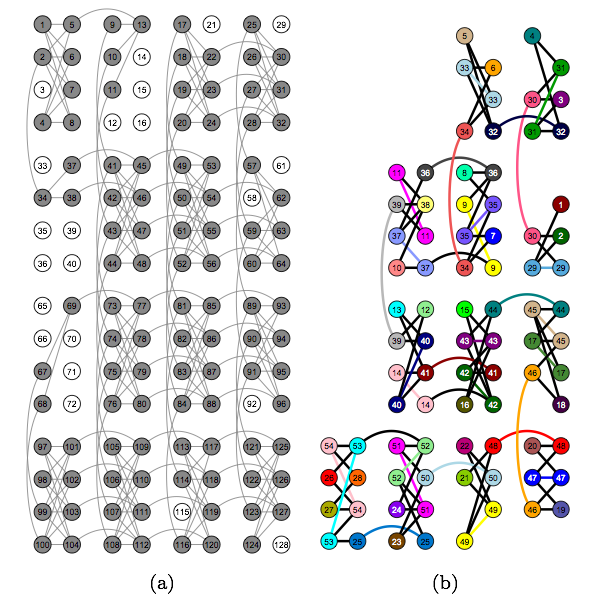In the realm of quantum computing, the intricate dance of qubits—quantum bits—remains a subject of both fascination and complexity. As quantum technologies progress, a critical question emerges: is it necessary to measure all qubits in a quantum computer? The answer is multifaceted, reflecting the rich interplay of quantum theory, computational efficiency, and the practicalities of measurement itself.
To navigate this question, it is essential to grasp the nature of qubits and the significance of measurement in quantum mechanics. Unlike classical bits, which exist clearly in a state of either 0 or 1, qubits inhabit a superposition of states. This quantum property enables the processing of vast amounts of data simultaneously, laying the groundwork for the exponential speed-up anticipated from quantum computers.
Measurement is the keystone of quantum mechanics, serving as the mechanism to extract information from a quantum system. When one measures a qubit, its superposition collapses to one of its basis states. This seemingly basic concept belies a deeper implication: measuring a qubit disturbs the system, potentially altering its quantum coherence and entanglement, which are pivotal for performing computations.
The question of whether to measure all qubits, therefore, hinges upon recognizing the objectives of the computation at hand. Not all quantum algorithms necessitate a complete measurement of qubits. Certain applications, such as quantum error correction or variational quantum algorithms, may benefit from strategically measured qubits, allowing for a more efficient extraction of useful information.
Focusing on quantum algorithms, one notable exemplar is Grover’s algorithm, which offers quadratic speedup for unstructured search problems. In this scenario, measuring only a subset of qubits could reveal critical intersections between computational paths, ultimately yielding the desired outcome without the requisite to engage every qubit fully.
In contrast, in certain quantum simulation tasks, the full measurement of all qubits can provide integral insights into the behavior of complex many-body systems. Here, one must strike a balance between acquiring comprehensive data and preserving the coherence of the qubits involved in the simulation. Such dualities underscore the pivotal considerations surrounding measurement strategy.
When considering quantum error correction, an area of growing importance for scaling quantum computers, the selective measurement of qubits is invaluable. In these error correction schemes, ancilla qubits are employed to facilitate the detection of errors without disturbing the primary qubits’ states. Thus, a holistic measurement of all qubits may not only prove unnecessary but can be counterproductive, as preserving superposition states is critical for maintaining the fidelity of quantum information.
The selective measurement of qubits extends into the territory of entanglement, a characteristic phenomenon that underpins the power of quantum computing. When qubits are entangled, the state of one can instantaneously influence another, irrespective of the physical distance separating them. Selective measurement can preserve the entangled states, allowing for a richer entanglement structure that empowers computations without disrupting every qubit’s delicate relationships.
Moreover, it is imperative to consider the technological constraints posed by current measurement technologies in quantum computing. Various physical systems leverage different approaches to measure qubits, including ion traps, superconducting circuits, and topological qubits, each with distinctive advantages and limitations. The fidelity and speed of these measurements can significantly dictate the operational capabilities of a quantum computer, forging a conversation around the practical versus theoretical implications of measuring all qubits.
A consideration of the scalability of quantum computers introduces another layer of complexity. As the number of qubits increases, the feasibility of measuring each qubit during computation becomes increasingly challenging. The exponential scaling of the state space means that the entire quantum system embodies copious entangled correlations among qubits. Thus, measuring all qubits becomes logistically convoluted, leading to a reconsideration of measurement techniques that might prioritize efficiency over exhaustive data collection.
Moreover, the conceptual framework surrounding quantum measurement provokes intriguing philosophical implications concerning the nature of reality itself. Classical intuitions—where measurement yields precise outcomes—are upended; quantum mechanics emphasizes probabilities and the influence of the observer on the outcome. This philosophical quandary compels researchers and theorists to rethink the implications not only for quantum computing but also for our understanding of measurement in broader scientific inquiry.
As we forge ahead in the quest for scalable and reliable quantum computers, the discourse surrounding whether to measure all qubits will remain vital. The narratives within quantum error correction, algorithm design, and the philosophical nuances of quantum states underscore the need for informed measurement strategies. Every qubit yields a wealth of information, yet understanding when and how to extract this information will ultimately delineate the frontiers of quantum computation.
In conclusion, the measurement of qubits, while indispensable to quantum computing, need not encompass all qubits to fulfill its purpose. A nuanced approach, accommodating the unique requirements of each computational task, promises to unravel the profound potential housed within quantum systems. As the scientific community continues to explore these complexities, the evolving landscape of quantum measurement will surely capture the imagination and intellect of a generation poised at the forefront of technological revolution.












